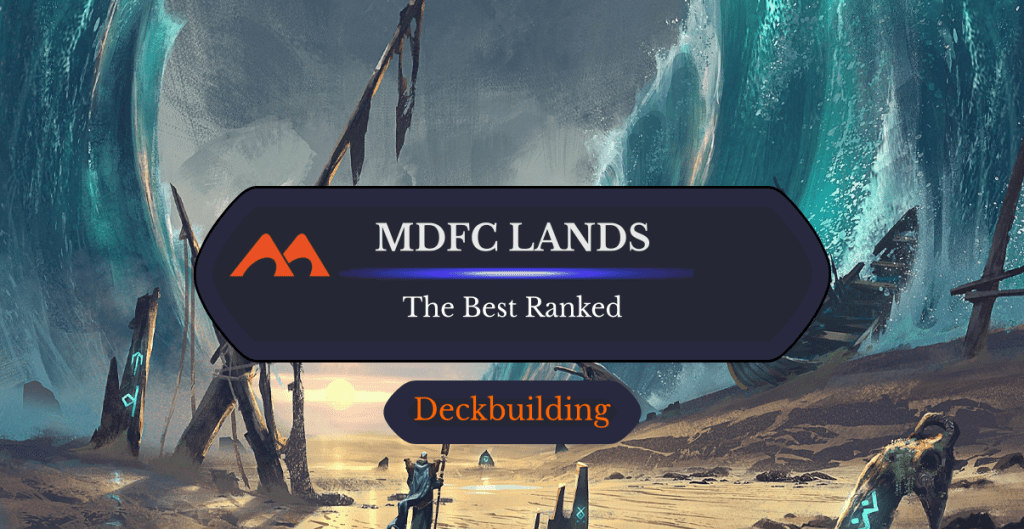
Tidechannel Pathway | Illustration by Grady Frederick
Ever since Innistrad introduced double-faced cards to resounding success, MTG designers knew that they could push the envelope further and throw in some wild innovations. After all, if people loved a card with two different faces, what else could be done? Double-faced cards previously had a limitation though, which was always to play the front face of the card and then transform into the back face. But not anymore, with the introduction of Modal Double-Faced Land cards (MDFC lands).
These are basically a split card between a land and a spell (specifically instants, sorceries, creatures), and you can cast or play either side. MDFC lands are deceptively powerful, allowing you to increase your land count and your spell count at the same time.
Let’s rank all the MDFC lands ever released in MTG and see which ones you should consider for your Constructed decks.
What Are MDFC Lands in MTG?
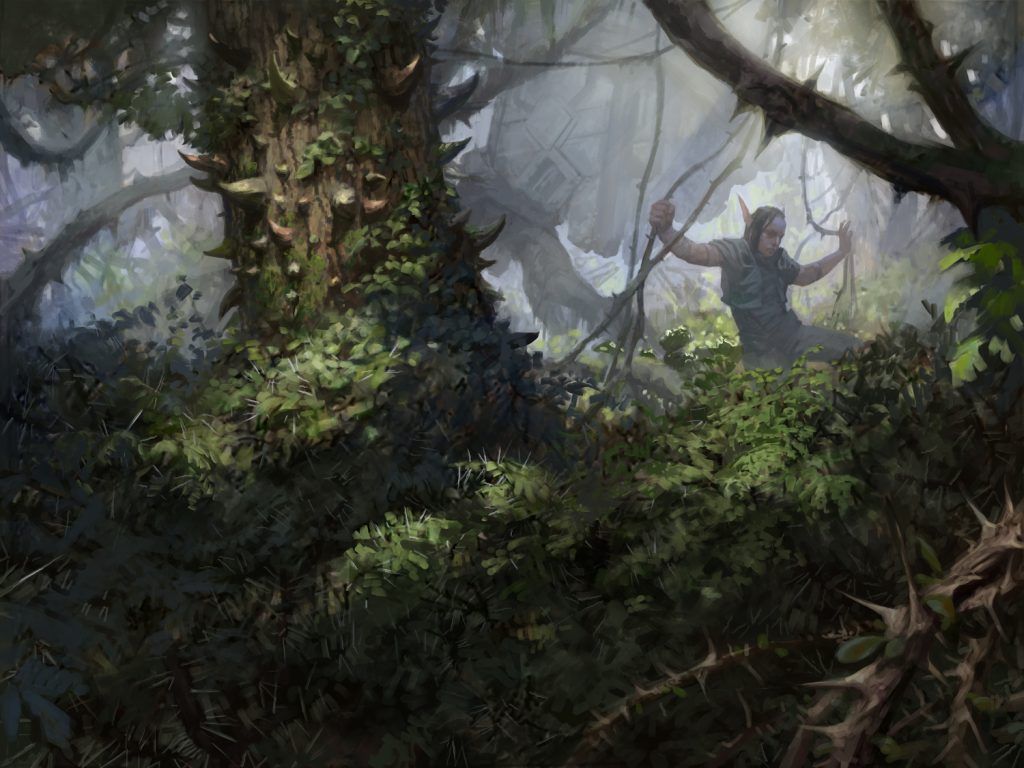
Vastwood Thicket | Illustration by Sidharth Chaturvedi
MDFC (Modal Double-Faced Cards) lands are a small variation on the double-faced cards that are usually present in Innistrad sets. The difference here is that you can choose which side to play instead of having to play the front face and transform it into the back face.
MDFC lands were the first MDFCs ever released, first in Zendikar Rising and then in Kaldheim. The back face is always a land, hence MDFC land cards. In subsequent sets, other MDFC cards were released like Valki, God of Lies / Tibalt, Cosmic Impostor, a card that has a planeswalker on the back face, or MDFCs that are two creatures, or a creature and an instant.
MDFC lands are present in all 5 colors of MTG, and represented equally. There’s a mythic cycle in all colors, some rare cycles, and some uncommon cycles. An interesting distinction is that on uncommon and rare MDFCs, the land side always generates a single color of mana and enters the battlefield tapped, so there’s this little downside. In the mythic rare designs however, you can pay 3 life to make the land enter untapped, like the Ravnica shock lands. There’s also the rare Pathway cycle, cards that are different because they have different lands on both sides of the card, each entering the battlefield untapped.
Of course, not all MDFCs are equally playable or even good, and that’s why we’re ranking them all!
#31. Beyeen Veil / Beyeen Coast
Beyeen Veil is a nice trick for Limited and that’s all. Nothing spectacular. Since it's uncommon, maybe your opponents won’t expect it and you’ll get a profitable attack or defense.
#30. Zof Consumption / Zof Bloodbog
Zof Consumption is something that you can play in a black life gain / life drain EDH deck replacing a Swamp, or in decks that care about your opponents losing life like a Rakdos, Lord of Riots EDH deck.
#29. Akoum Warrior / Akoum Teeth
In this day and age, a 4/5 creature with trample needs to cost around 4 mana and have some significant upside to see play. The interesting part here is that Akoum Warrior is a nice alternative mode as a land, making this card extremely useful in Limited. And it’s an extra warrior if you care about that. A few cards let you blink the land part (Akoum Teeth) when you don’t need it anymore, and you’ll get an extra body.
#28. Vastwood Fortification / Vastwood Thicket
We’re still in Limited territory, and being able to give a +1/+1 counter is a very small upside on a land card. I could see Vastwood Fortification being played in green decks that care a lot about +1/+1 counters, but even so, you’ll be playing the land part much more since it’s a weak effect.
#27. Makindi Stampede / Makindi Mesas
The worst part about playing cards like Overrun is that it doesn’t do a thing if you don’t have creatures. In Makindi Stampede, we have a card that’s useful if you’re going wide but can also be a backup land.
#26. Khalni Ambush / Khalni Territory
Khalni Ambush is an instant speed fight effect that’s usually good in Limited, and in Constructed it’s easier to splash another color that has removal. I’m rating this above other cards simply because green decks usually play fight effects as ways to interact, and this is a slightly overpriced one.
#25. Song-Mad Treachery / Song-Mad Ruins
Song-Mad Treachery is your typical act of treason effect, and you can play this card in “Steal and Sac” decks that require more redundancy in steal effects. It’s a bread-and-butter effect in EDH decks like Brion Stoutarm that can Fling the stolen creatures at will.
#24. Umara Wizard / Umara Skyfalls
In Umara Wizard, we have a 4/3 merfolk wizard that cares about instants, sorceries, and wizard spells being cast. If you can give it flying consistently it’s good, and there are some Commander decks like Azami, Lady of Scrolls that wouldn’t mind replacing a basic Island for this.
#23. Blackbloom Rogue / Blackbloom Bog
Blackbloom Rogue is a rogue creature that also cares about mill decks, as many rogue tribal decks do. In rogue decks this creature is usually a 5/3 menace or stronger for only 3 mana, and decks that want as many rogues as they can get, like Anowon, the Ruin Thief EDH decks, love playing these cards.
#22. Kazuul's Fury / Kazuul's Cliffs
Kazuul's Fury is a Fling variant. Like Act of Treason, Fling is a very situational card and goes into very specific decks, so it’s nice to have a land disguised as this effect. Decks that want this type of cards are usually sacrifice-oriented commanders, and I’ve seen a Kazuul's Fury + Body of Research combo deck in its Standard format as a viable option.
#21. Skyclave Cleric / Skyclave Basilica
Skyclave Cleric has seen some play in Standard as a cleric that’s also a good defender. Cleric decks usually have lifegain synergies, and this card is interesting in cleric decks or decks that want as many lifegain triggers as they can get.
#20. Sejiri Shelter / Sejiri Glacier
Sejiri Shelter is a protection variant that, as an MDFC land, you can easily include in your Voltron decks, or decks that care about combat tricks like Feather, the Redeemed.
#19. Tangled Florahedron / Tangled Vale
Here’s a Tangled Florahedron, a mana dork that’s also a land. Neither of the two sides is very exciting, but you’ll play it in decks that need consistent ramping or decks that care about it being an elemental. This card saw plenty of Standard play in its time.
#18. Malakir Rebirth / Malakir Mire
Malakir Rebirth is a very cheap way to prevent your commander from certain death. This card adds redundancy to cards like Undying Malice. It costs just 1 mana, and you can play it in sacrifice decks that abuse ETB or death triggers.
#17. Kabira Takedown / Kabira Plateau
Kabira Takedown can be a nice instant speed removal spell in decks that go wide with tokens. It’s very conditional because you’ll need to have some creatures around, so if you don’t have creatures, just play an extra land.
#16. Pelakka Predation / Pelakka Caverns
I’m rating Pelakka Predation more because it saw some Standard play as a discard spell that can be played even when your opponent is in top-deck mode.
#15. Ondu Inversion / Ondu Skyruins
Ondu Inversion is a nice one-of in white control decks simply because you’ll never know when you truly need to reset the board. After all, Farewell is a heck of a sweeper but it doesn’t get battles or planeswalkers.
#14. Spikefield Hazard / Spikefield Cave
During its stay in Standard, the best application of Spikefield Hazard was to deal damage to escape creatures like Kroxa, Titan of Death's Hunger, this way exiling them when they were sacrificed. It’s a way to include more burn in your deck, and depending on the meta, it can kill many important creatures like mana dorks or Thalia, Guardian of Thraben.
#13. Kazandu Mammoth / Kazandu Valley
Kazandu Mammoth is a beefy creature played in stompy decks, and together with fetch lands, you can have a 7/7 attacking on turn 4. Its best use is in decks that care about creature power like a Ghalta, Primal Hunger EDH deck or together with cards like The Great Henge. It was a green staple in its Standard time, and it works very well with ramp spells that put lands into play tapped.
#12. Silundi Vision / Silundi Isle
When you’re looking for a given instant or sorcery in your deck, looking at the top 6 cards yields a nice chance to find what you’re looking for. Silundi Vision does that, and you can find a counterspell, a combo piece you need, a tutor, or a removal spell.
#11. Bala Ged Recovery / Bala Ged Sanctuary
Bala Ged Recovery is a card that interests many green decks or Golgari decks with self-mill components. It’s a more flexible Regrowth effect that costs only 1 more mana, and it’s used in lots of infinite recursion loops.
#10. Turntimber Symbiosis / Turntimber, Serpentine Wood
Turntimber Symbiosis is a big green spell for ramp decks that have mana floating around. You can even play the land to avoid falling behind, and it’s a nice top deck in the late game. You’ll either cheat a nice creature into play or put a small creature and make it huge. It also has synergies with +1/+1 counters or decks that care about high power or toughness.
#9. Hagra Mauling / Hagra Broodpit
Hagra Mauling is a little expensive for a Murder effect at 4 mana, so here the playability is 100% tied to it being an MDFC land card. When people tell you to play more interaction in your decks, you can easily shave off a Swamp in your deck for this, and in some games, you won’t regret it.
#8. Sea Gate Restoration / Sea Gate, Reborn
Drawing a lot of cards and not having a maximum hand size is something that many blue decks aim to do. Like all the cards from this list, the failsafe for Sea Gate Restoration is a land, and there are all sorts of Commander decks willing to cast this because they have draw synergies or because they have ways to cheat on the spell cost.
#7. Shatterskull Smashing / Shatterskull, the Hammer Pass
This is a two-for-one removal spell attached to a land. Shatterskull Smashing isn’t the best red wipe or the most efficient one, but it’s one of the easiest to include in decks. Be sure to include this in EDH decks that care about the damage dealt to creatures like Toralf, God of Fury or decks like Rosheen Meanderer that produce 4 mana for X spells.
#6. Emeria's Call / Emeria, Shattered Skyclave
Making two 4/4 flying tokens for 7 mana is somewhat pricy, but that's just the icing on top for the backside, which is a Plains that can come into play untapped. Emeria's Call is at worst a land drop and at best a flying sky force. It gets better with commanders that care about angels or flying creatures and ways to double the tokens created. In Standard, some decks used this card as one of just a few win conditions.
#5. Valakut Awakening / Valakut Stoneforge
Valakut Awakening sees a lot of play in EDH combo decks as a filter piece that allows you to fix bad hands or to get rid of some redundancy you might have. As a bonus, there are some commanders like Grenzo, Dungeon Warden that care about the card you just put at the bottom of your library.
#4. Glasspool Mimic / Glasspool Shore
Cloning your creatures with Glasspool Mimic already has lots of implications, especially in cloning EDH decks like Keiga, the Tide Star or Sakashima of a Thousand Faces. These decks usually run all the clone variants they can get, and having one tied to a land doesn't hurt at all.
#3. Jwari Disruption / Jwari Ruins
Jwari Disruption sees plenty of play in formats like Explorer/Pioneer since it’s a fine option in the early game as a Censor-type card and another land drop. Blue control decks usually already run a high land count, and with MDFCs lying around, you can play even more lands.
#2. Agadeem's Awakening / Agadeem, the Undercrypt
Agadeem's Awakening saw plenty of Standard play in black decks as a value card. It’s not unusual to get two or three creatures back straight to the battlefield, and in black EDH decks, you can get half your graveyard back with some mana lying around. The downside is pretty negligible since it’s a black land that can come into play untapped.
#1. The Cycle of Pathways
The pathways are your traditional cycle of 10 rare dual lands, except that they don't generate two colors of mana at once. You can play one of these either as a Clearwater Pathway and be able to generate blue mana, or as Murkwater Pathway, a land that generates black mana. But not both.
These are also the only MDFC lands that don't have a spell attached to any side. It's like they've glued the backside of a basic Island and a basic Swamp. The pathways don't have any downside, they don't come into play tapped or require life payment, and they fit almost any dual-colored deck.
Pathways are also perfect for light splashes, like when you have a mono-black deck with lots of Swamps and Phyrexian Obliterator and want a light green splash to play fight spells like Bushwhack. Although I prefer the and versions of the Pathways due to my deck preferences, it's impossible to rank them individually, and I'd say that the best Pathway is the one that fits your deck.
Best MDFC Lands Payoffs
The best aspect of the MDFCs is their flexibility. One of the better and weirder payoffs for this mechanic is to help in deck building restrictions.

Play them in companion decks like Keruga, the Macrosage because you can have lots of cards with mana value of 3 or more that are also lands, thus fulfilling the companion condition.

Fires of Invention decks can play the MDFCs as lands or cast them as spells, whatever is more convenient.
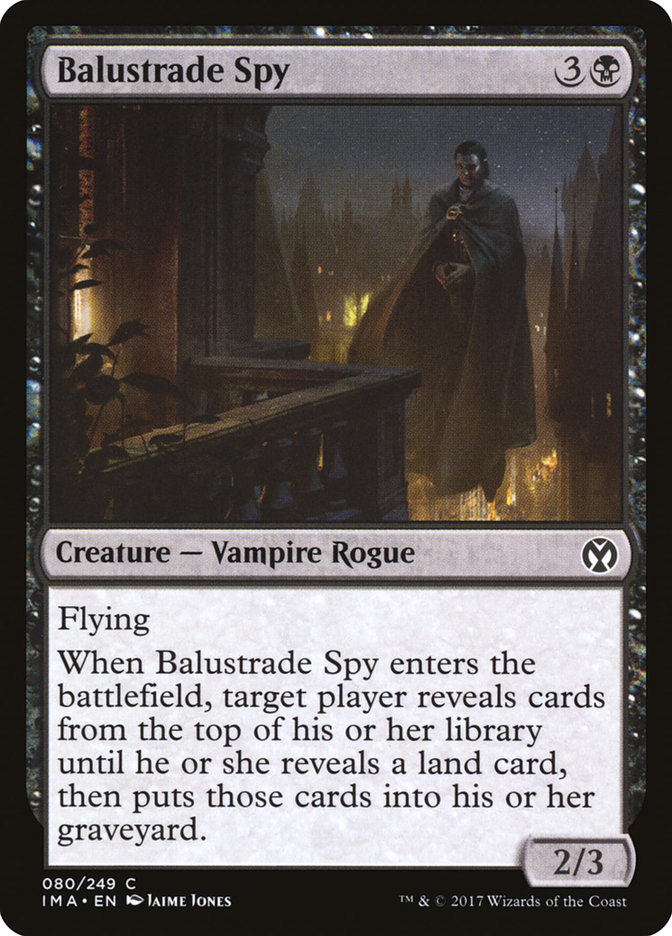
“Oops, all Spells” decks usually play very few lands. With MDFC, they can cheat by playing more lands in the decks, and when a Balustrade Spy is cast, you’ll reveal the top card of your library and it won’t be considered a land if its a MDFC land because the land is in the back face.
Ramp decks that have plenty of “you can play an additional land each turn” effects like to include lots of MDFC lands because it’s good in the early game when you need to ramp and okay in the late game when you don’t need extra lands and need something to do with your mana.

There are also lots of possibilities with land recursion. You can play them from the graveyard using Crucible of Worlds or return them to your hand after playing a bounce land to cast the spell later.
Are MDFC Cards Lands When They’re in Your Hand?
In your hand, the MDFC card is always the type on the front side of the card. Aside from the Pathway cycle, the other MDFC cards are instants, sorceries, and creatures on the front side, while being lands on the backside.
Can You Play MDFC Cards With Crucible of Worlds?
With Crucible of Worlds, you can only play the land side of the MDFC card because Crucible allows you to play lands in your graveyard. If Sejiri Shelter / Sejiri Refuge is in your graveyard, you can play Sejiri Refuge from there, even if it’s considered an instant card in your graveyard.
What Happens When You Blink an MDFC?
If you blink a MDFC, it’s always going to return to the battlefield with its front side. The backside has a different frame from the front side, and it also has different arrows on the left side of the card name. The front side has an arrow pointing to the top, while the backside has a top arrow and a bottom arrow. All MDFC land cards are lands on the backside, so if I play Akoum Teeth and blink the land, it returns as Akoum Warrior. If I blink Akoum Warrior, it returns as the creature and not the land. If the front side is a sorcery or instant, nothing happens. Official rulings state that “If that front face can't be put onto the battlefield, it doesn't enter the battlefield. For example, if an effect exiles Sejiri Glacier and returns it to the battlefield, it remains in exile because an instant can't be put onto the battlefield.”
Can You Look at Both Sides of an Opponent’s MDFC Land?
You can, but only when the game rules allow you to do so. To quote MTG’s comprehensive rules:
“711.2. Players who are allowed to look at a double-faced card may look at both faces.”
So, if a MDFC land is in any public zone (battlefield, graveyard, exile) you may look at both sides. If an effect allows you to look at your opponent’s cards in hand, you may also see both faces of the card. According to rule 711.3, players that play double-faced cards must use opaque sleeves or something similar to prevent showing their cards.
Wrap Up
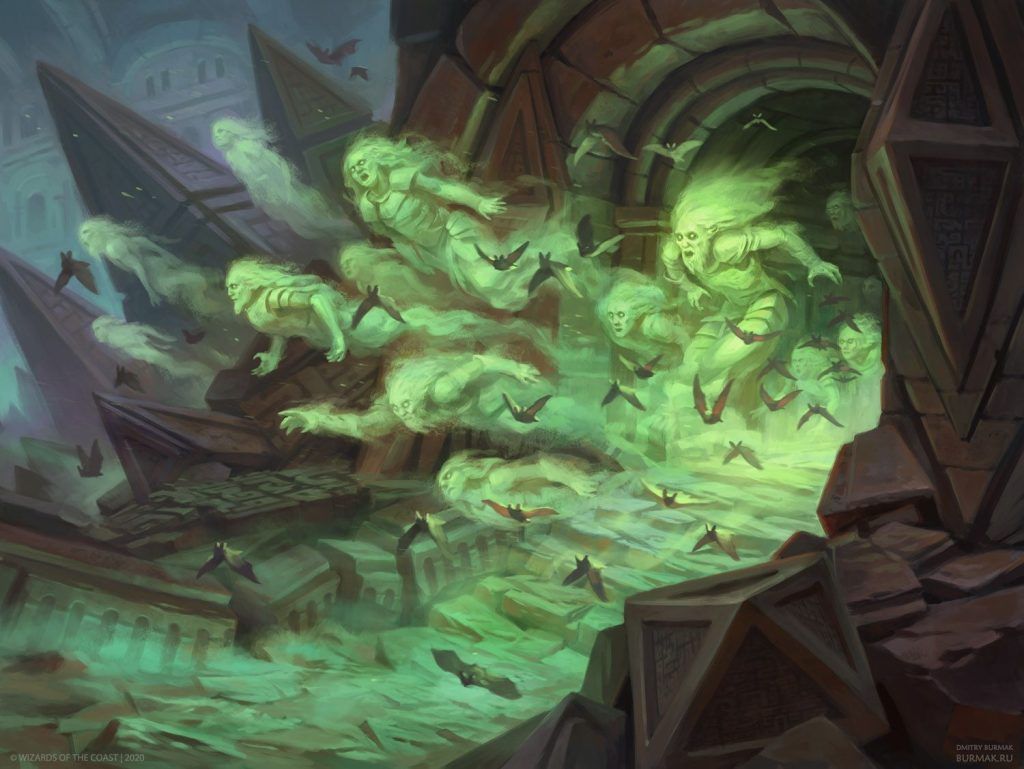
Agadeem's Awakening | Illustration by Dmitry Burmak
MDFCs look weak but are actually very strong. It may not look like much, but how many times have we played a game and got stuck on two lands with lots of 3-drops in hand. It’s a very quick road for defeat, that I’ll tell you. Also, kudos for WotC on the design of these cards, because most of the “spells” are conditional spells.
Topdecking a MDFC land on the late game is awesome, be it in Limited or Constructed, and it gives you more possibilities of sequencing the lands in the early game, while not being overpowered like adventures.
Now I want to hear from you: Which MDFC Land is your favorite? Which ones do you usually play? Please leave your comments in the comments section, or let’s discuss it in Draftsim Discord.
Thanks for reading everyone, and may you all choose the best use of a modal card in future games.
Follow Draftsim for awesome articles and set updates: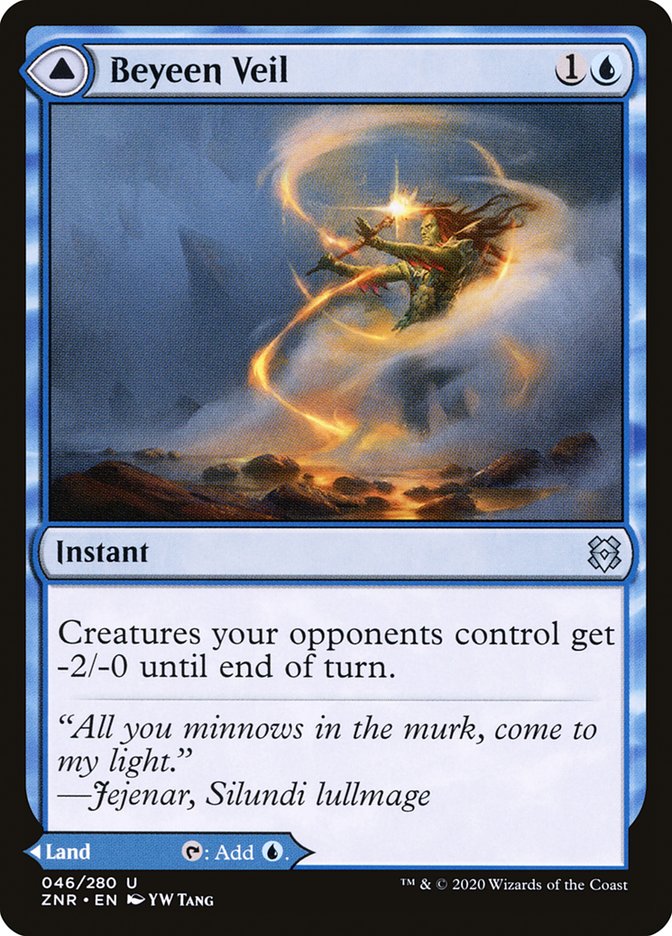


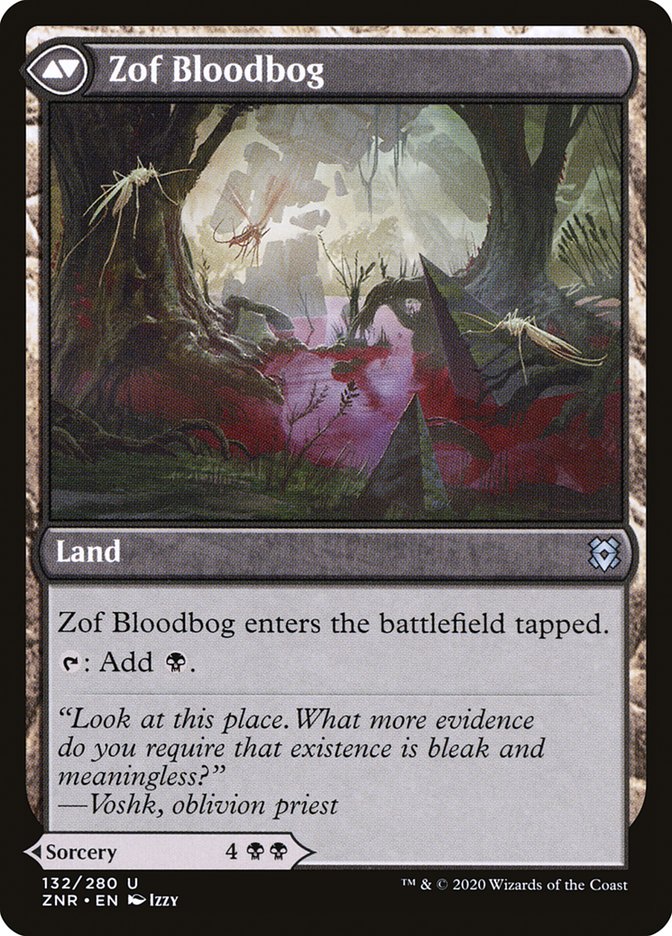
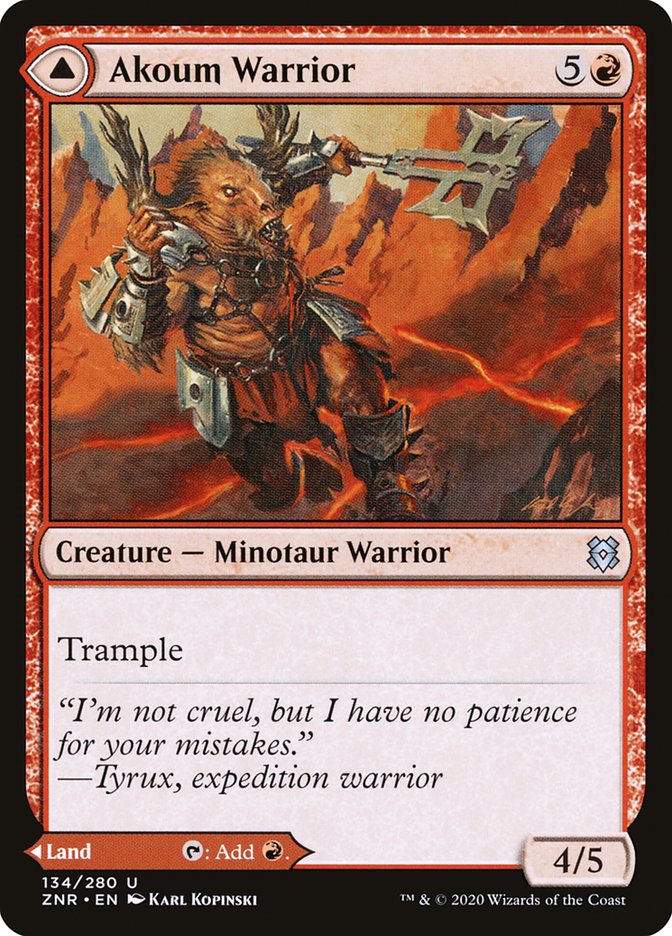

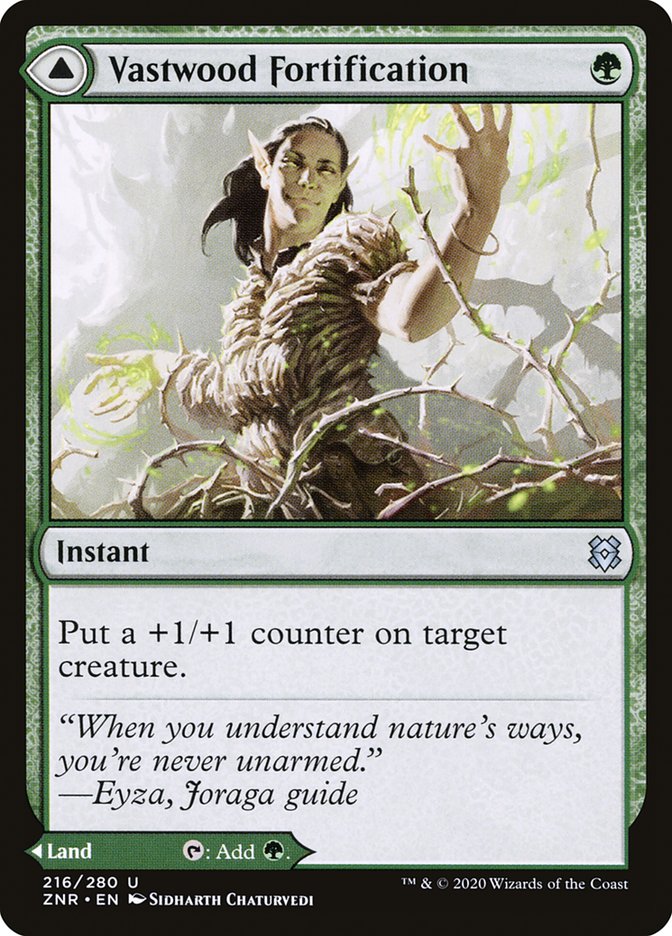


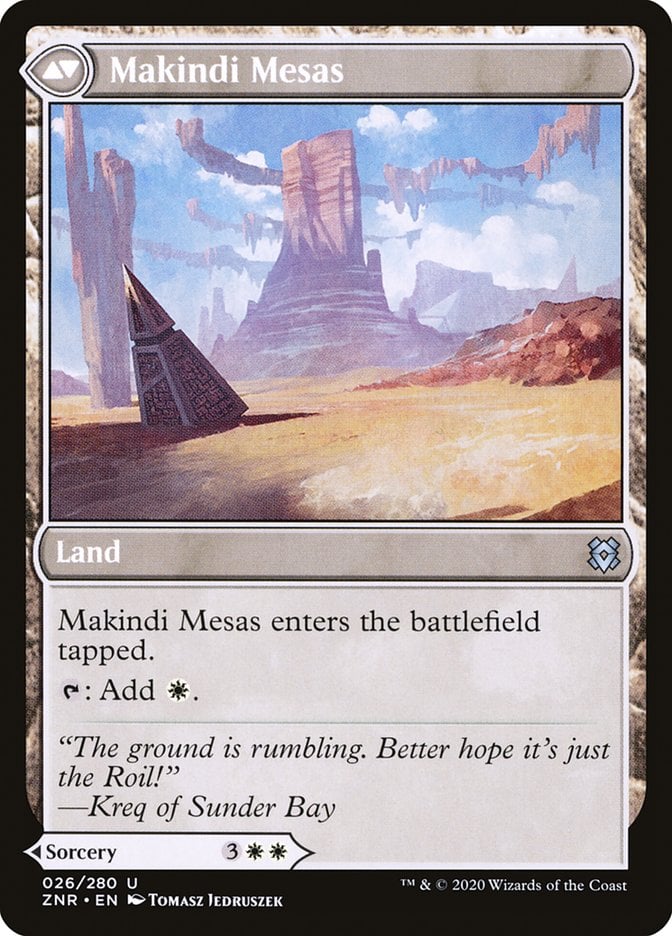
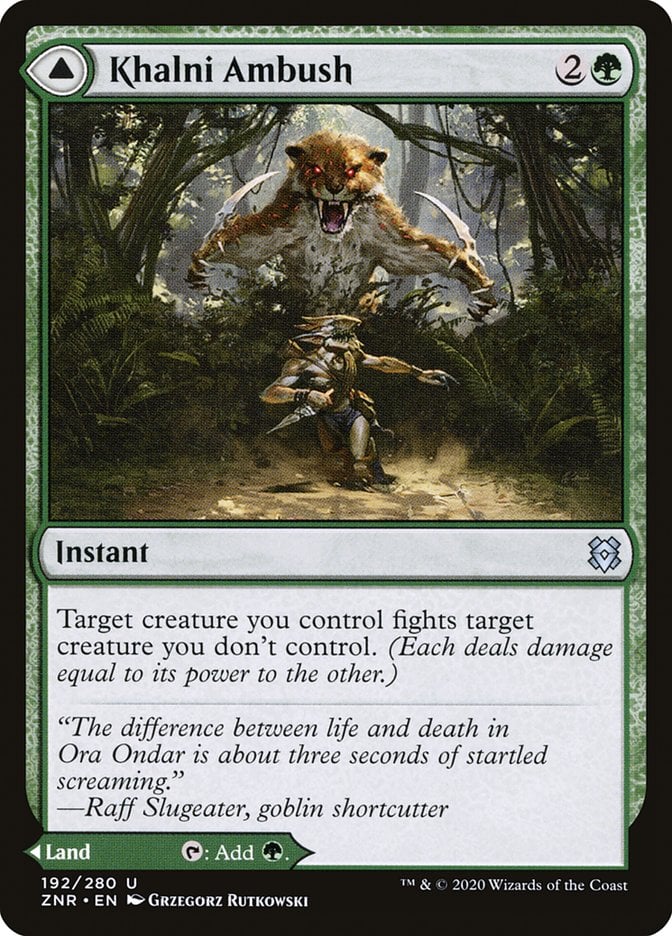

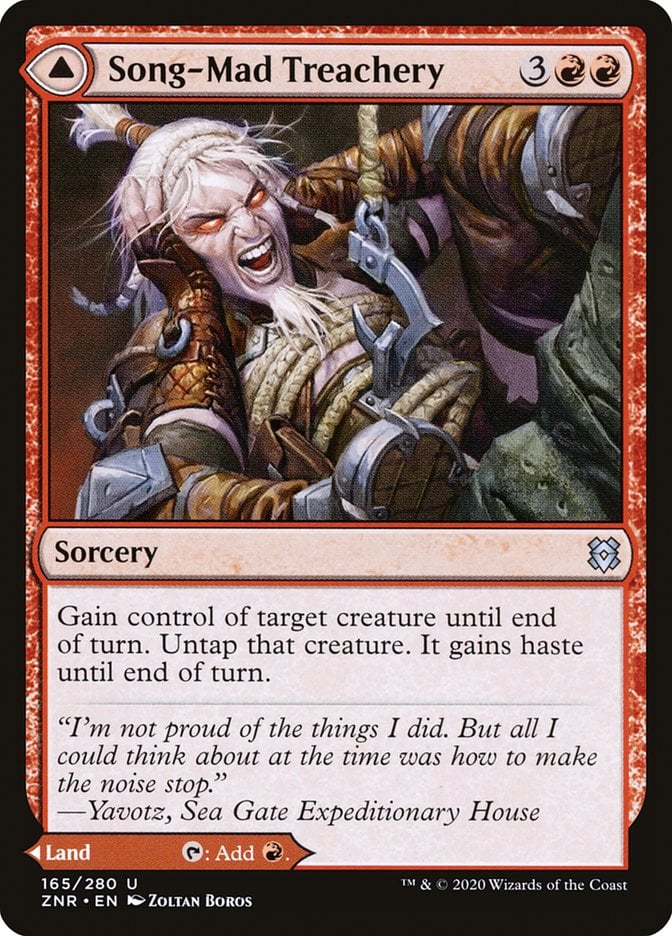

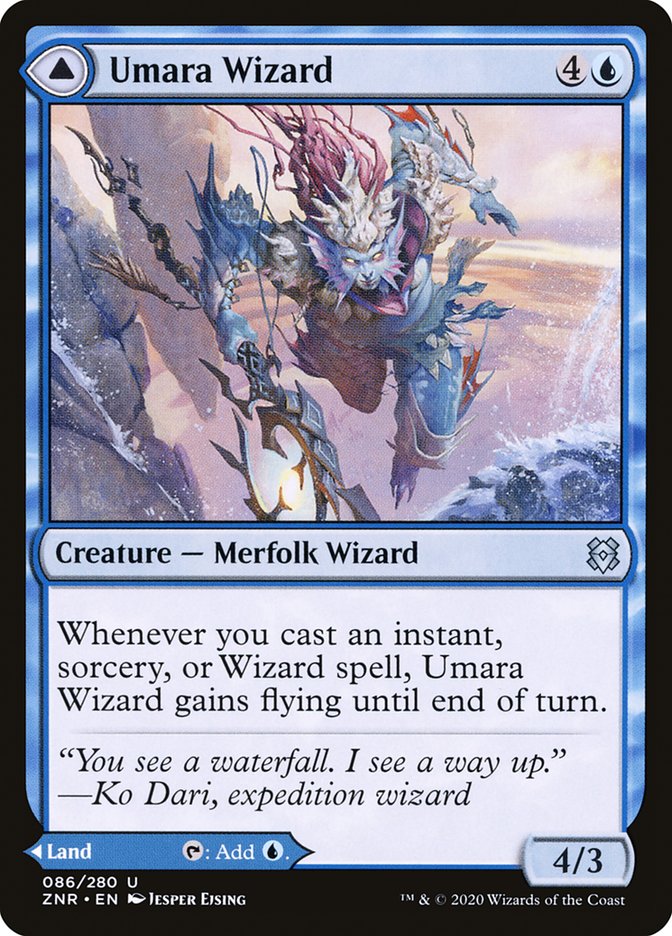



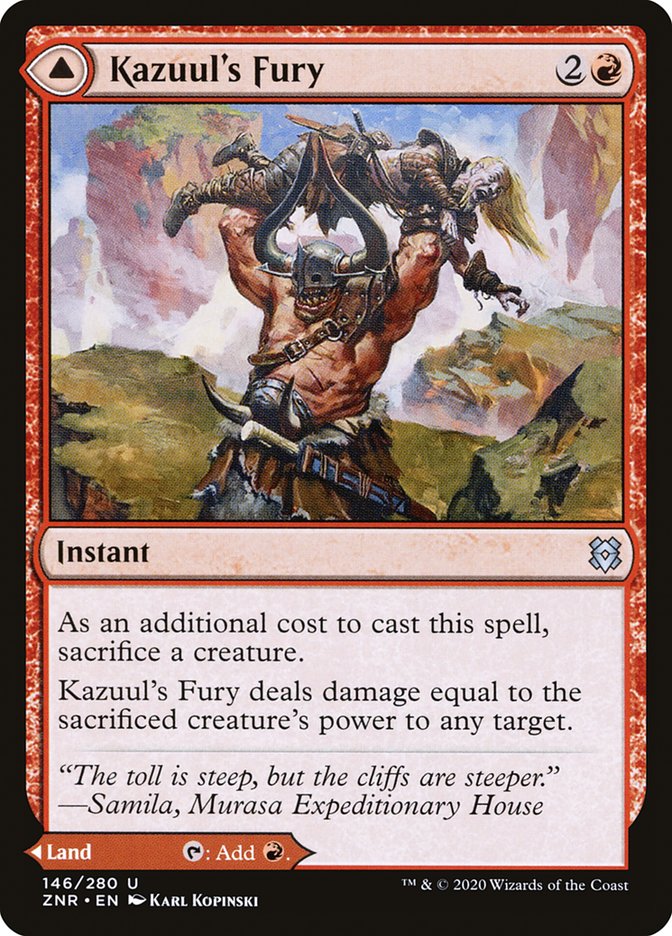



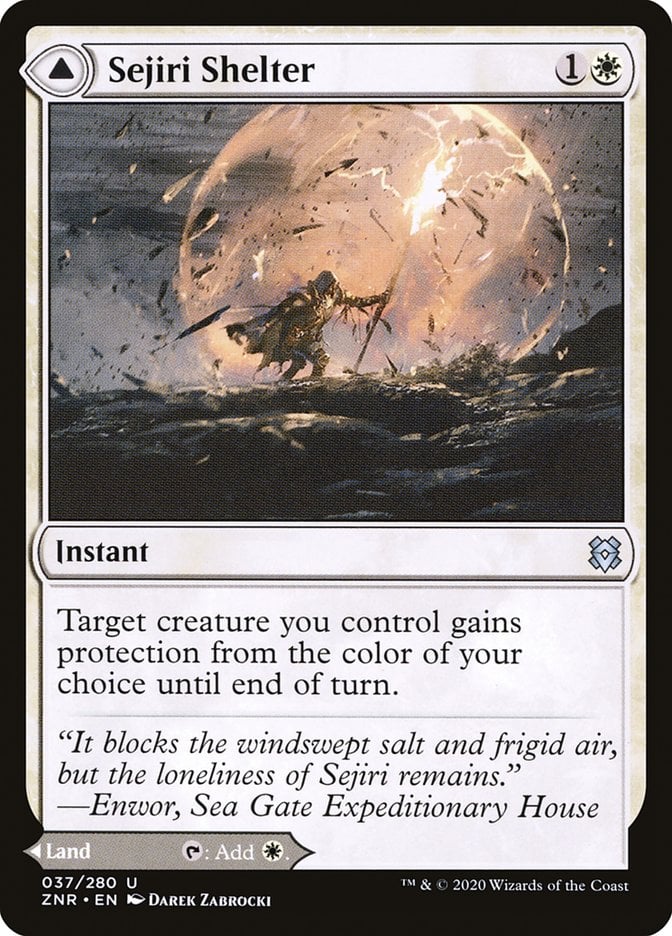

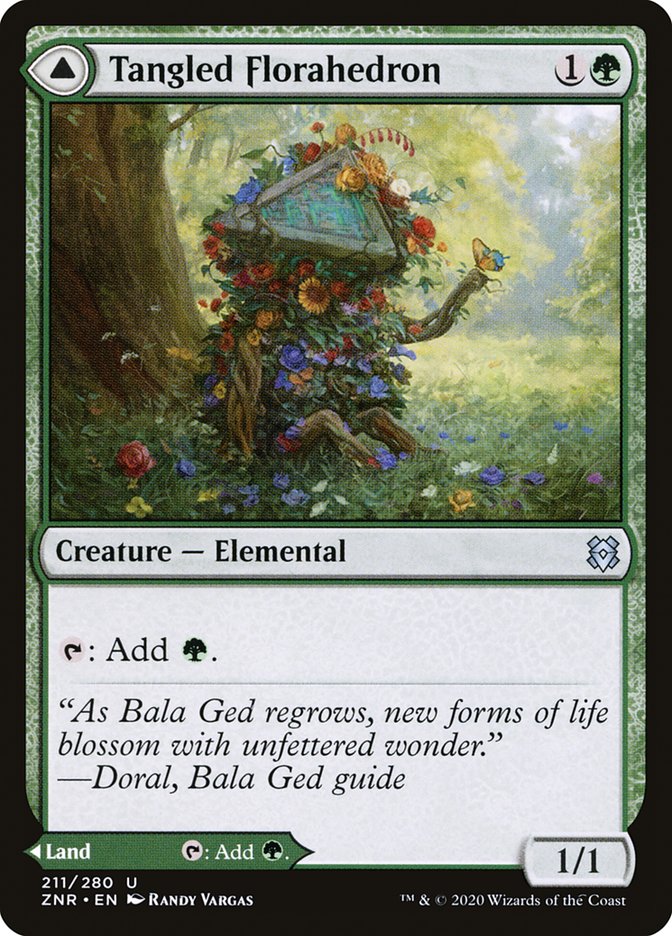

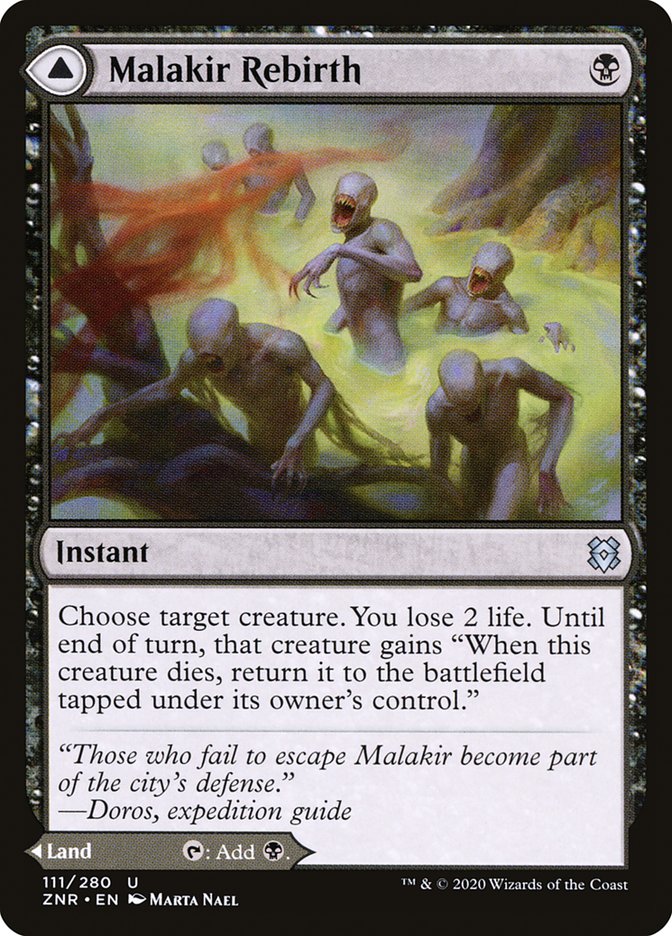

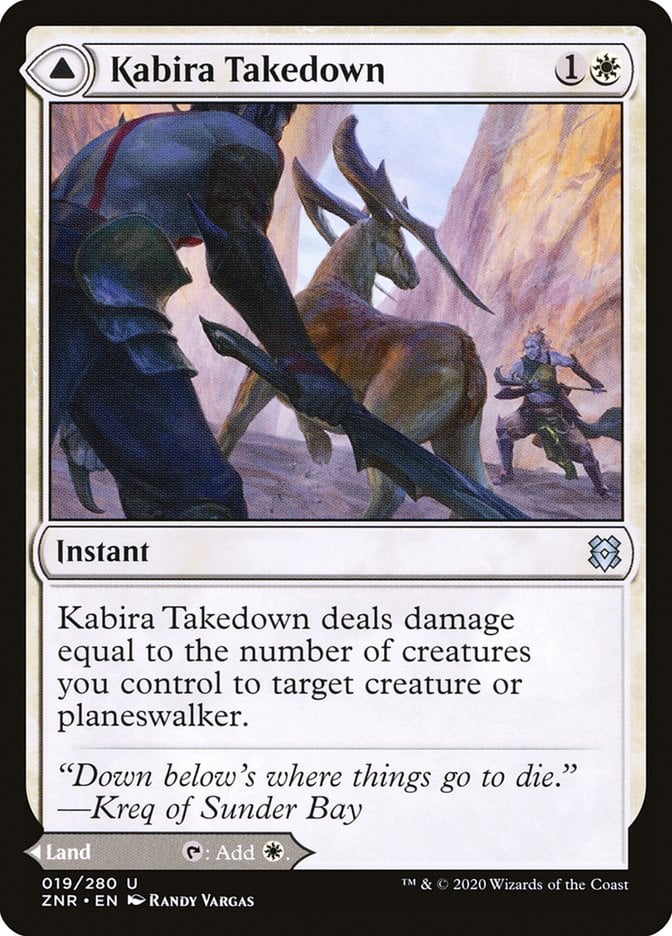

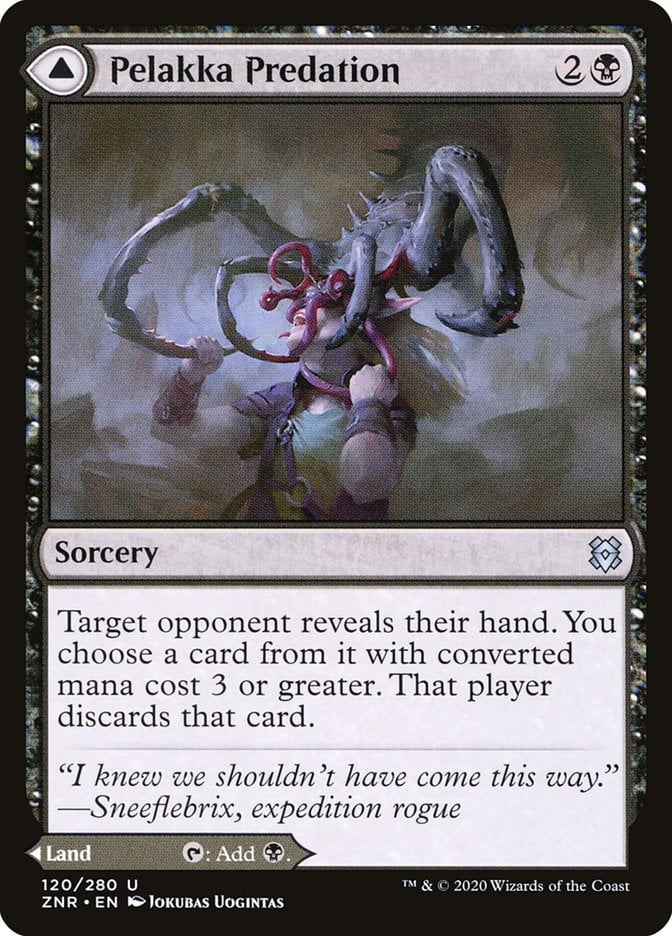

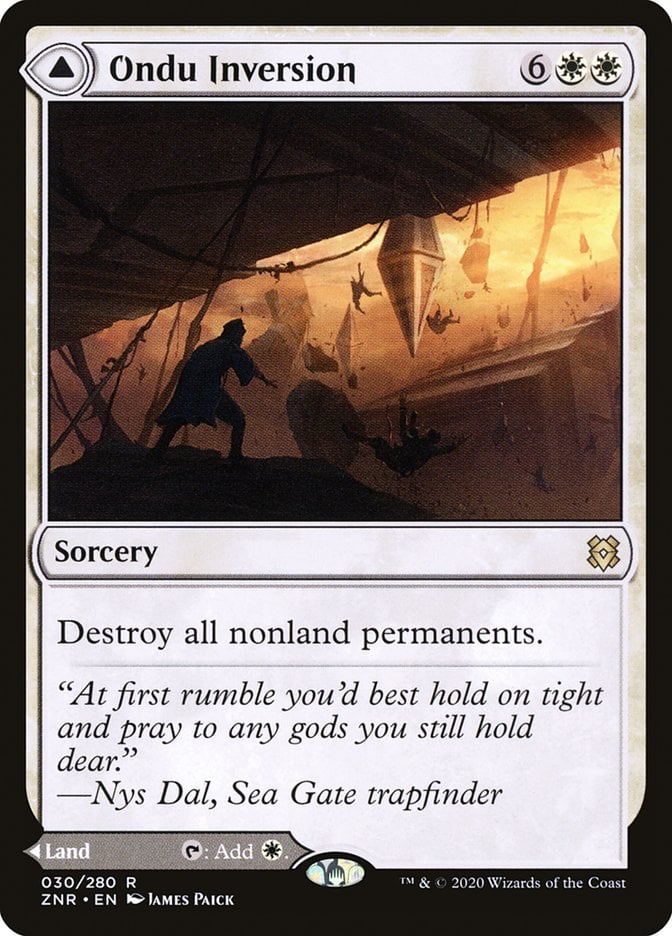




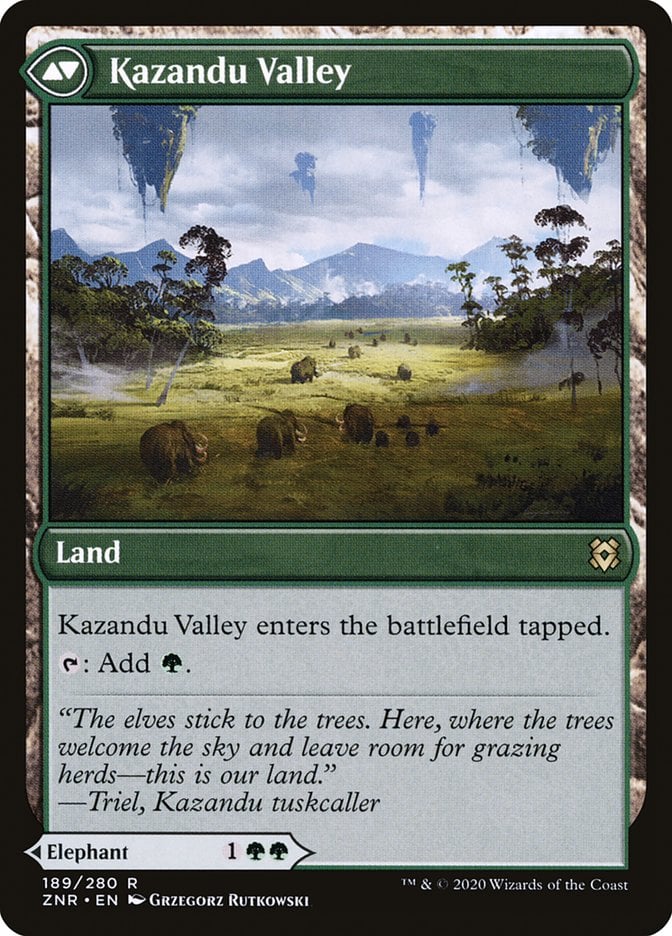
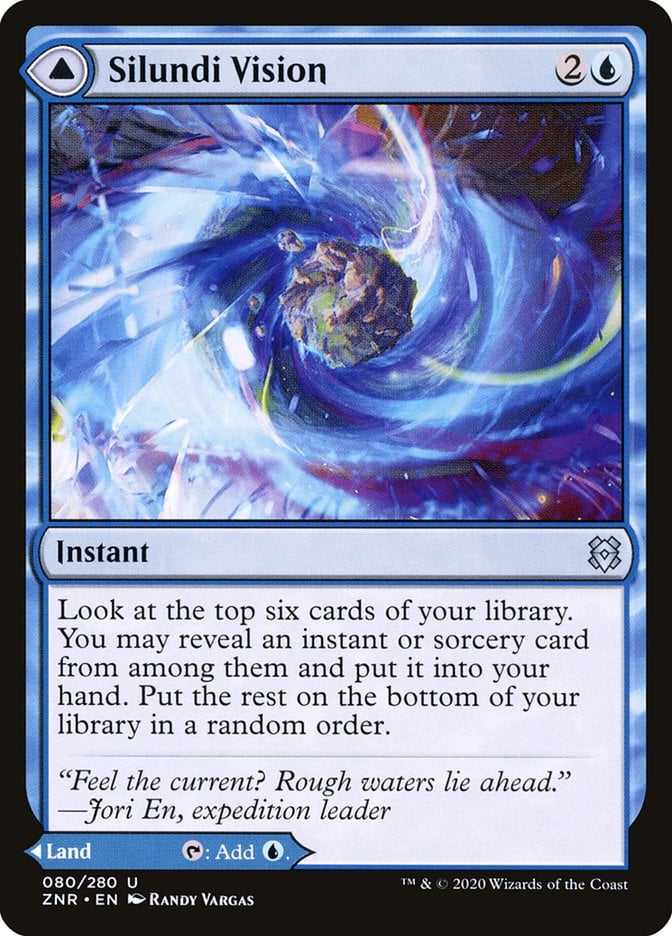

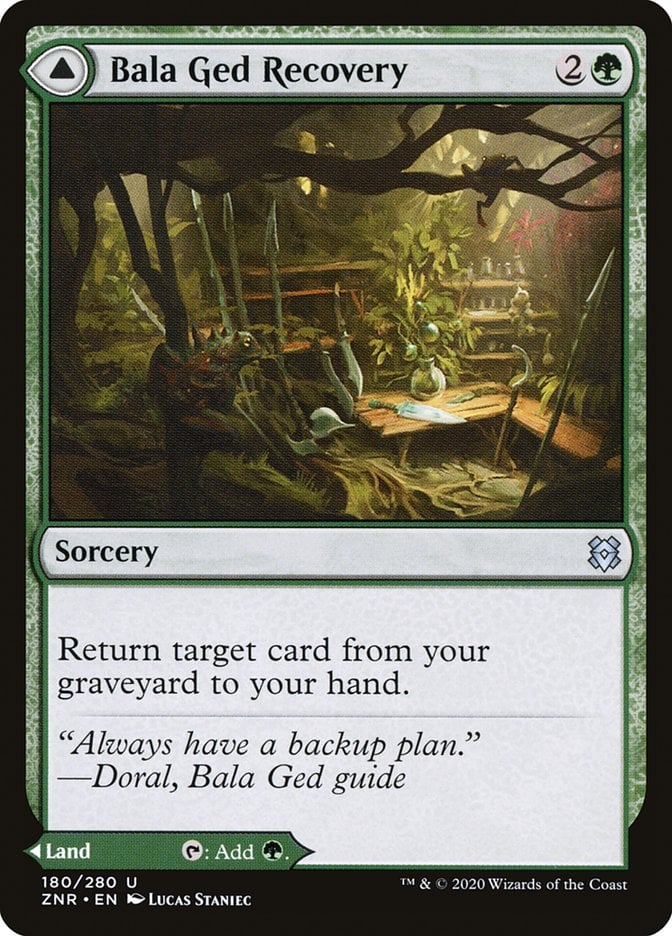


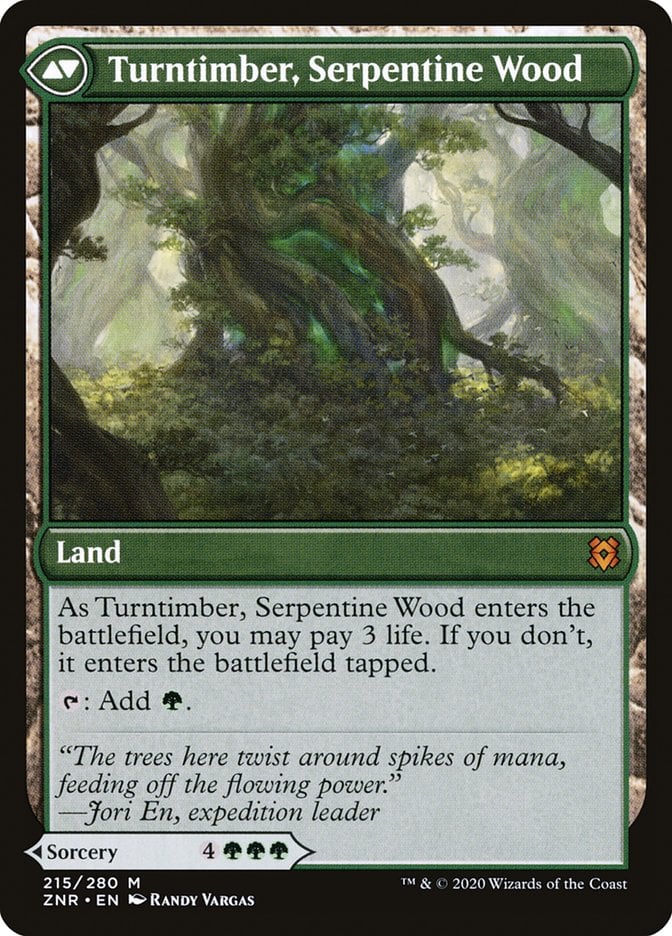
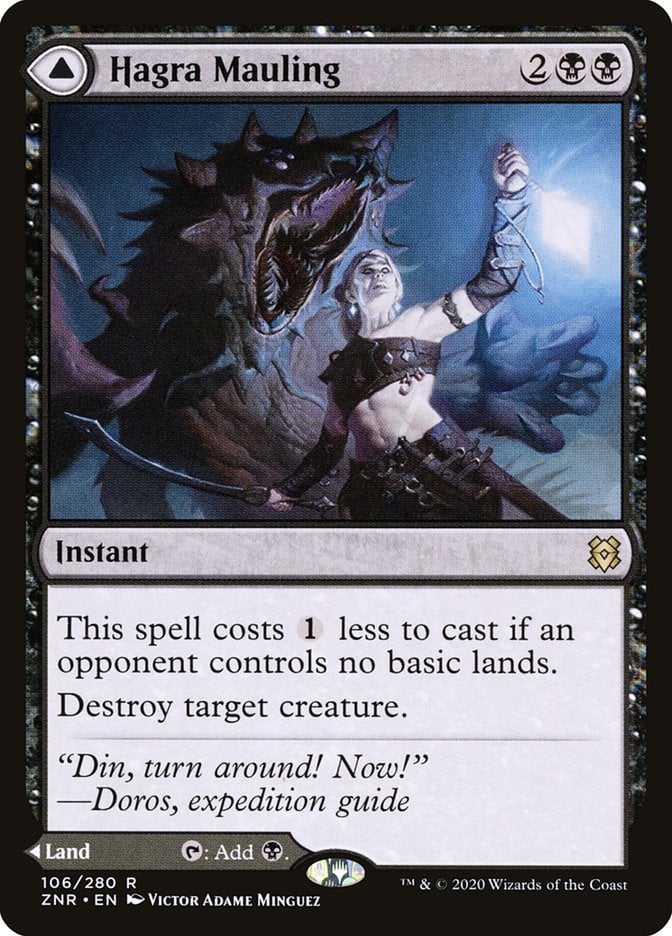

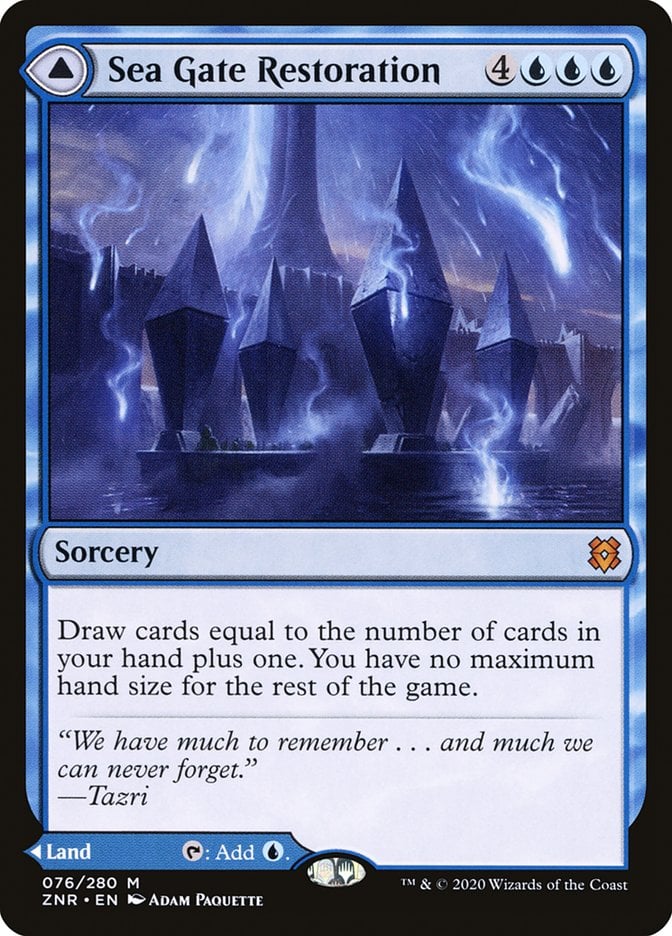

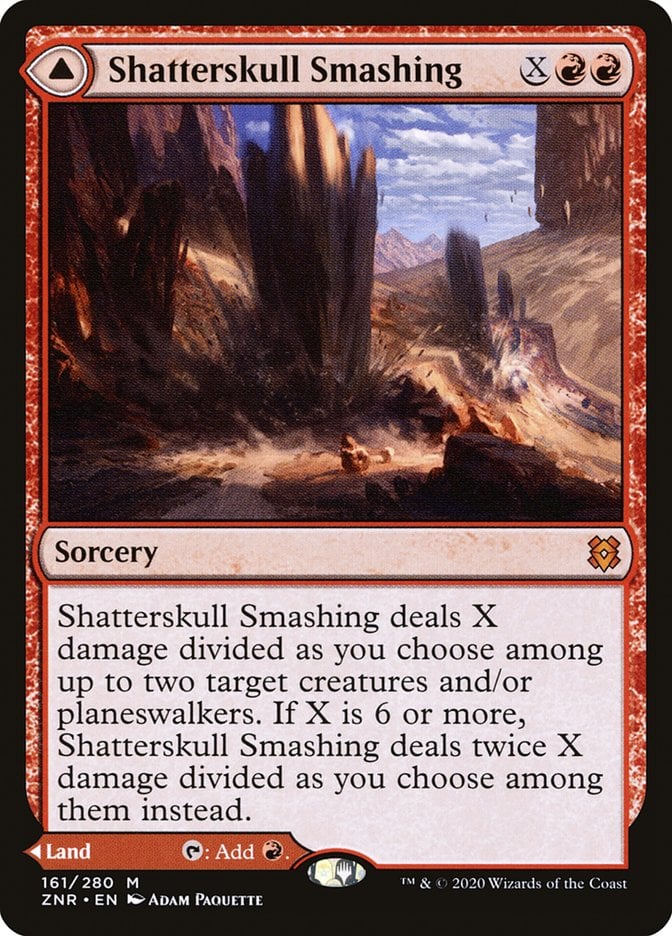

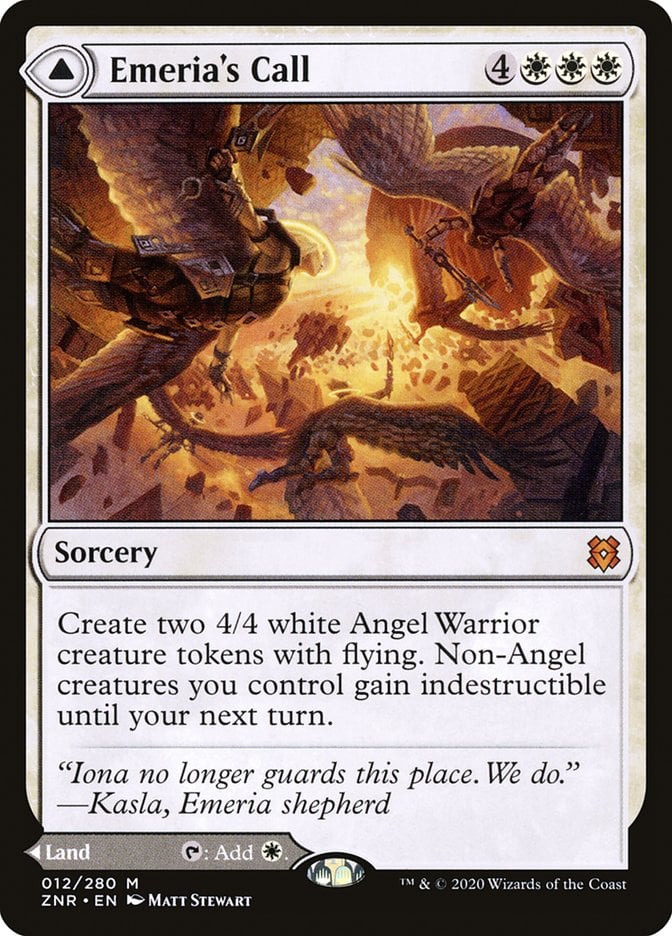

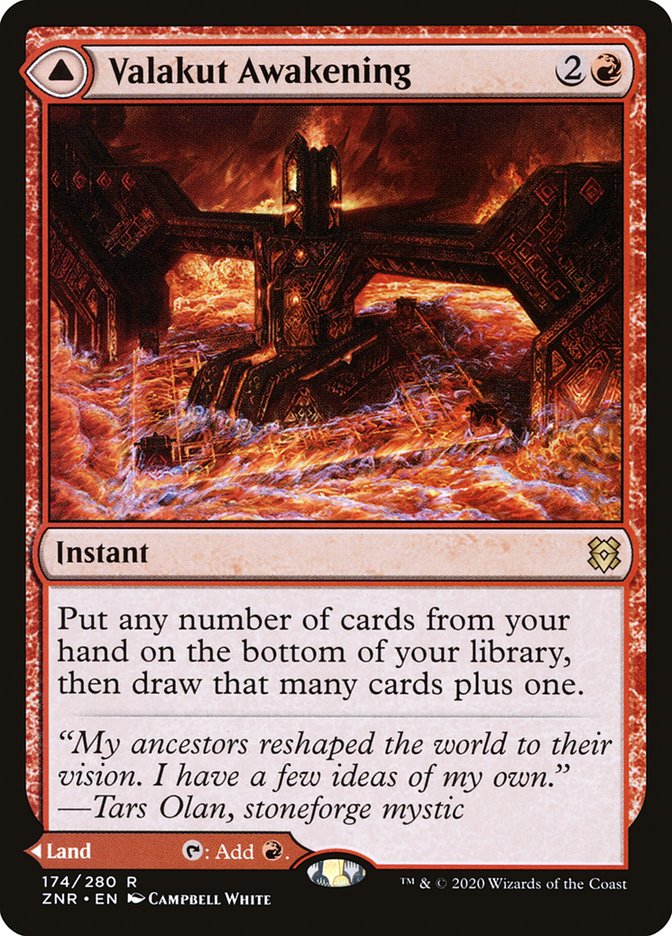



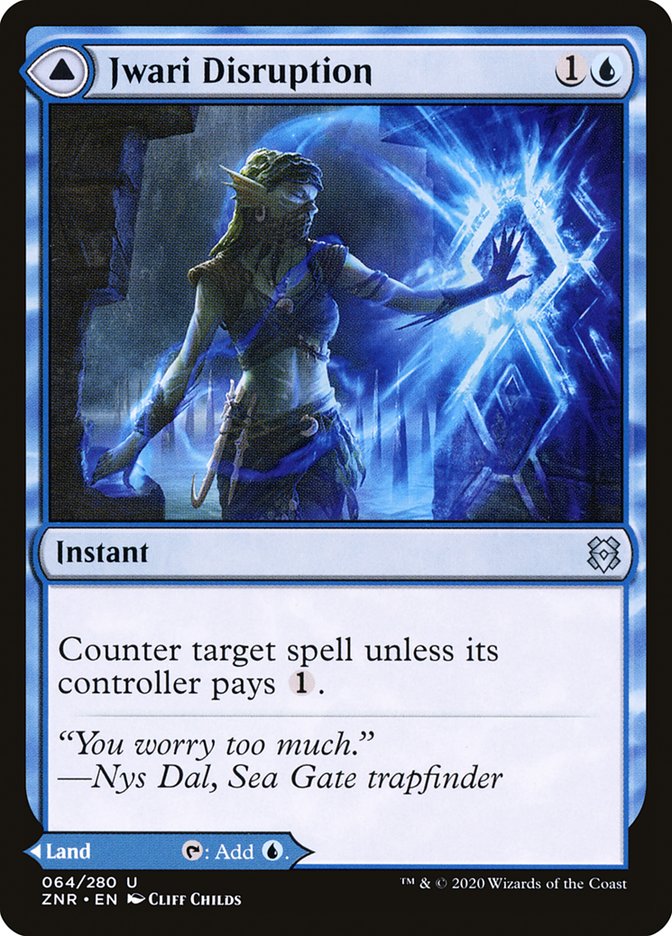

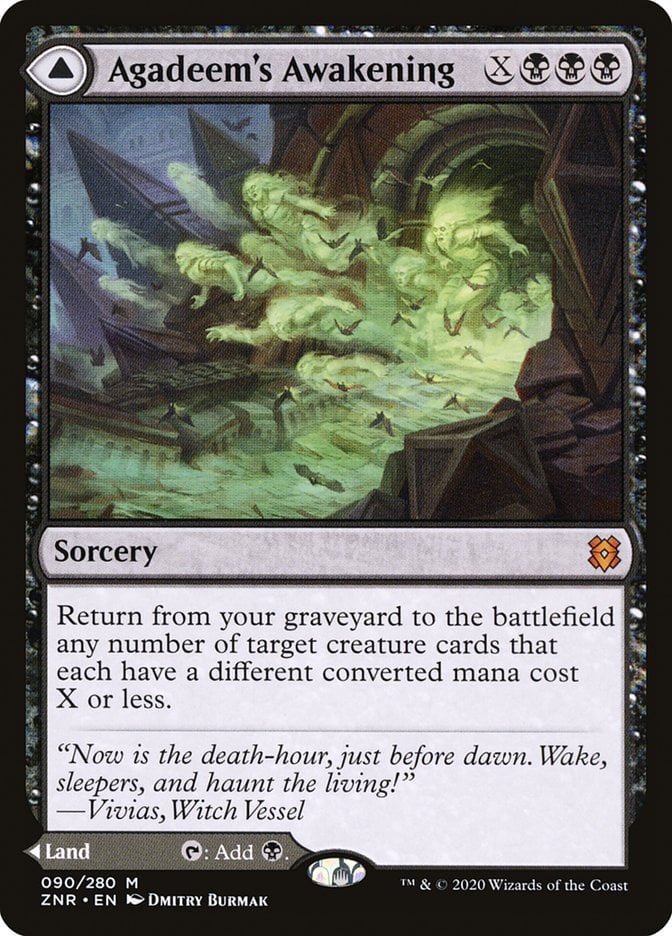

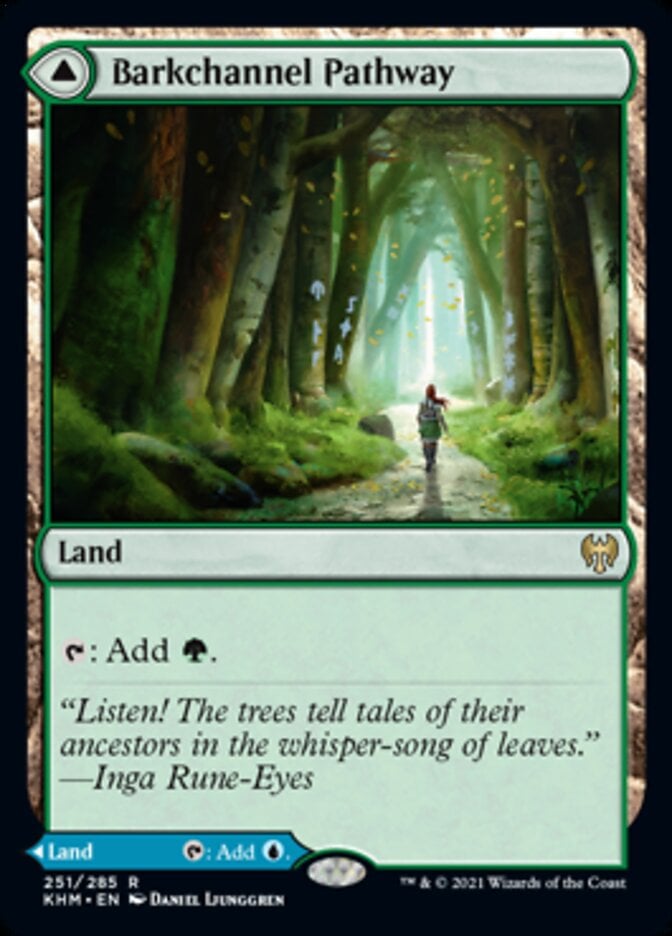

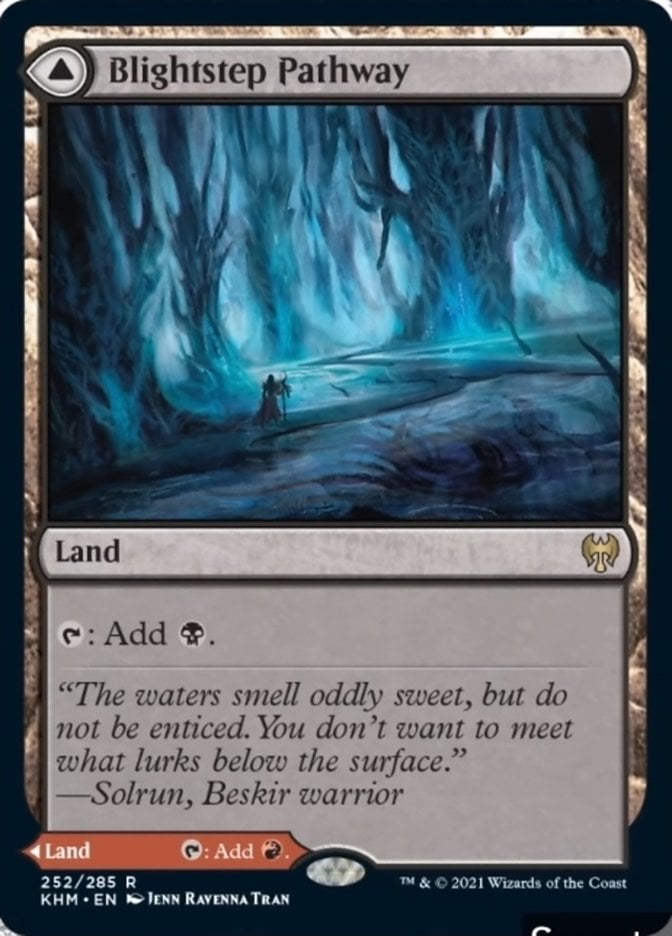


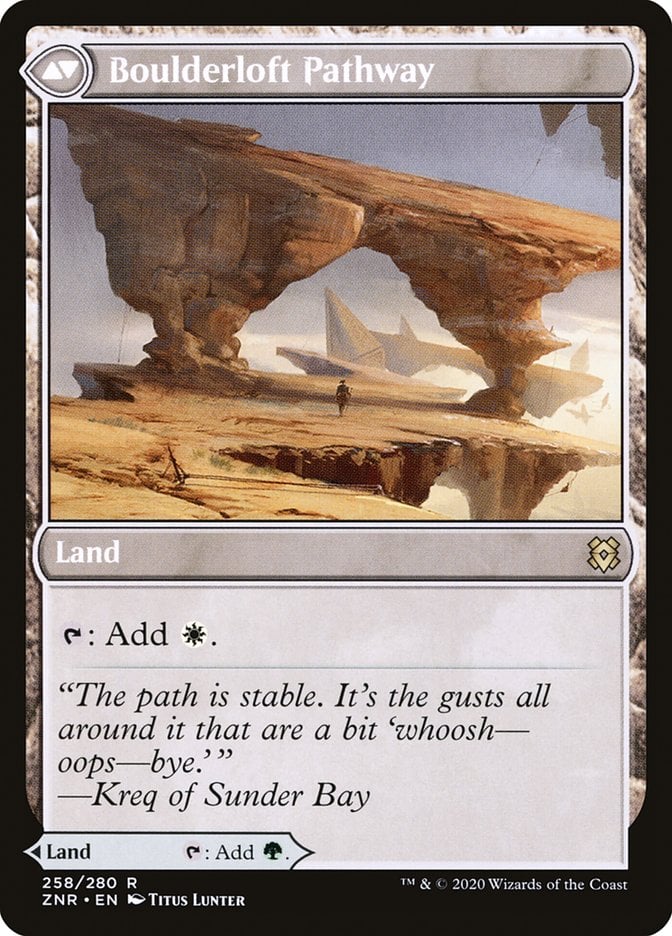
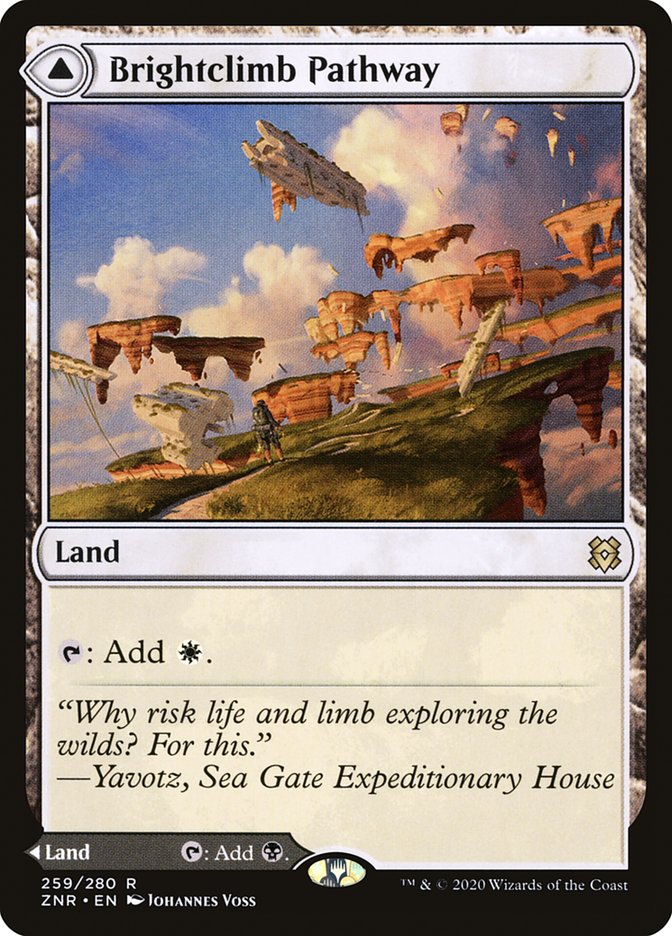

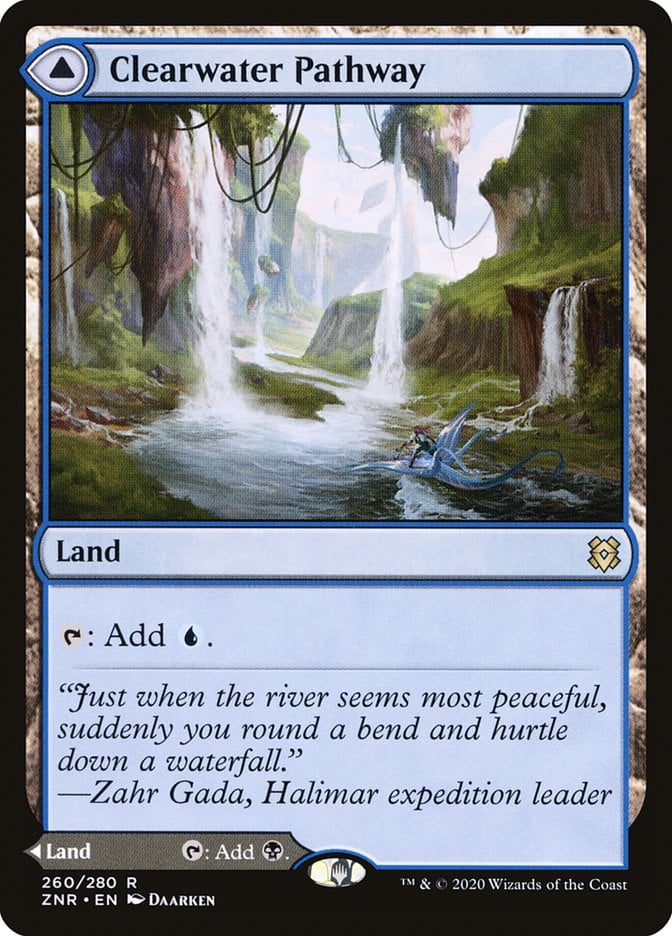

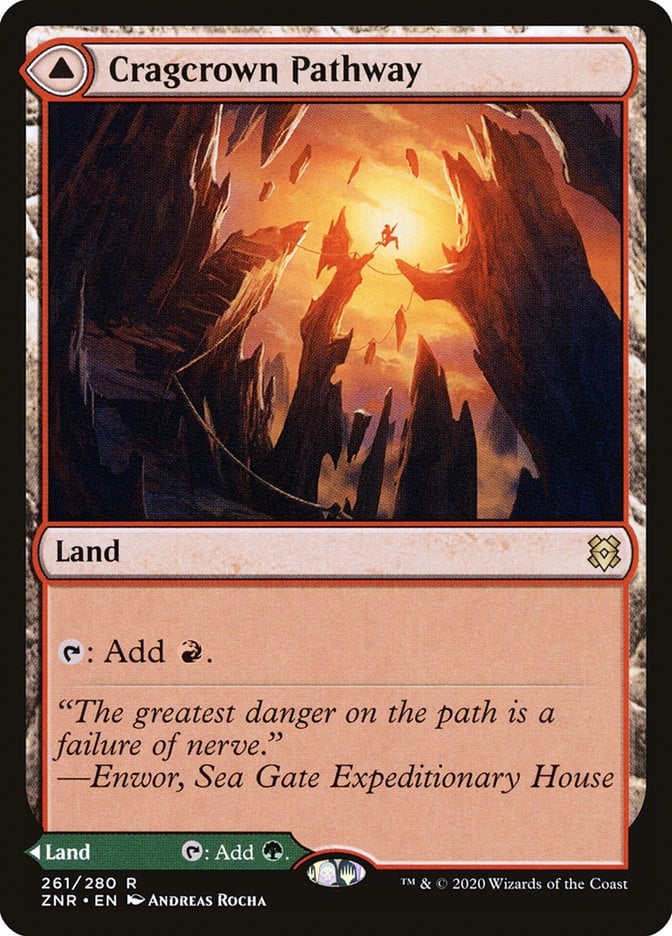


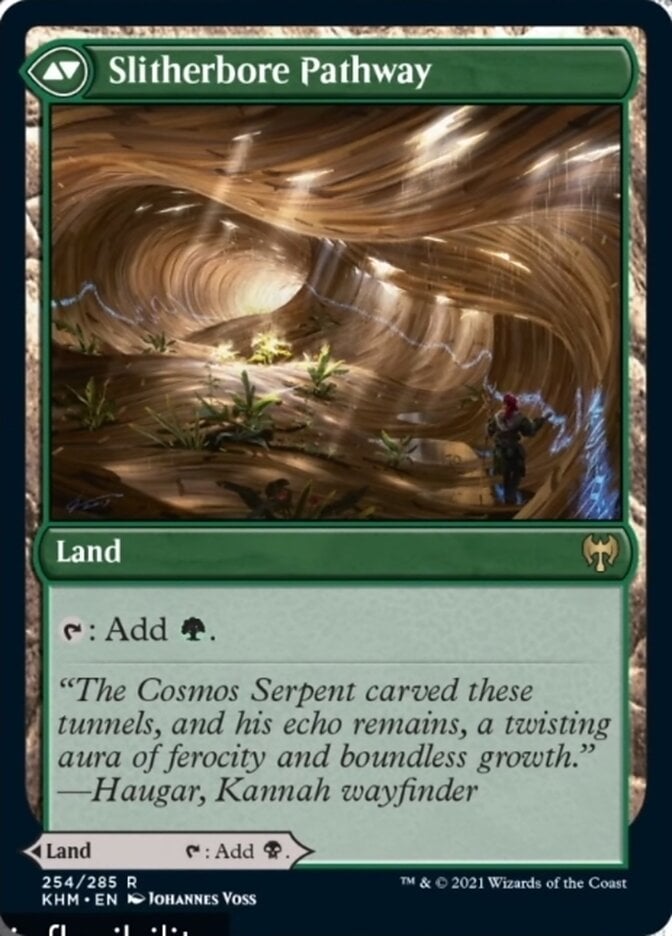
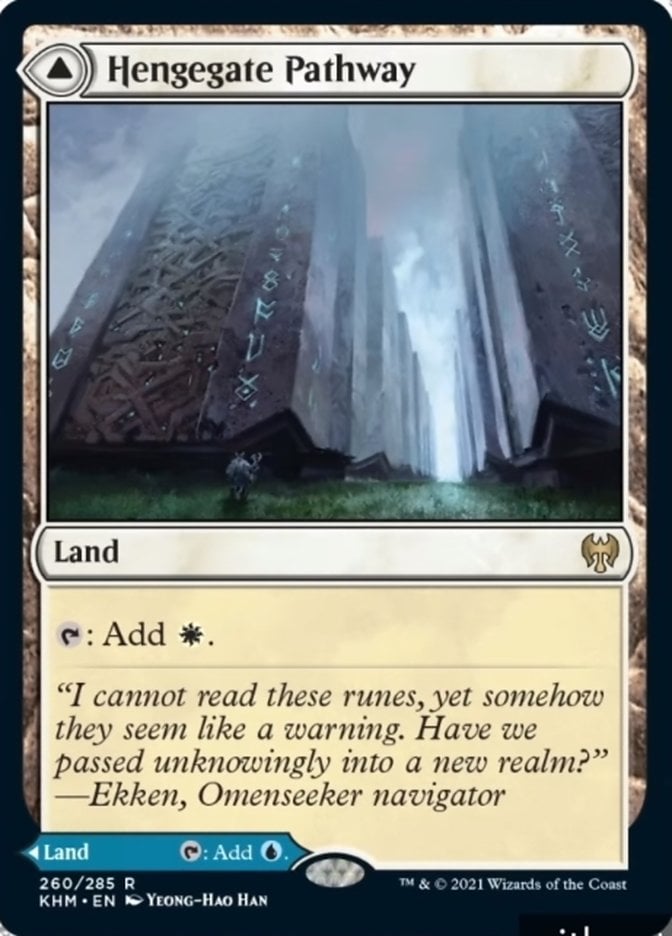


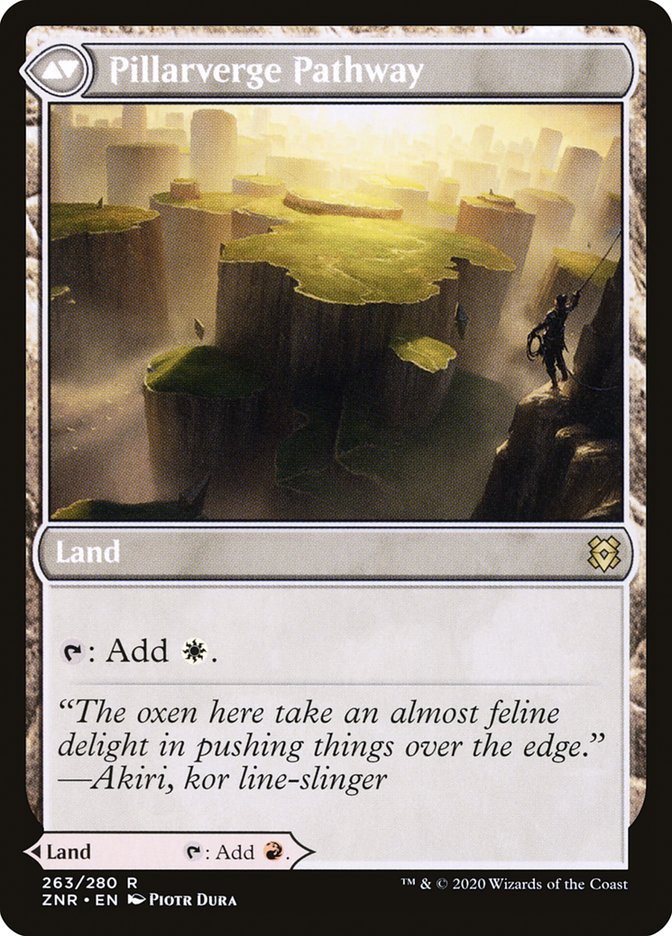
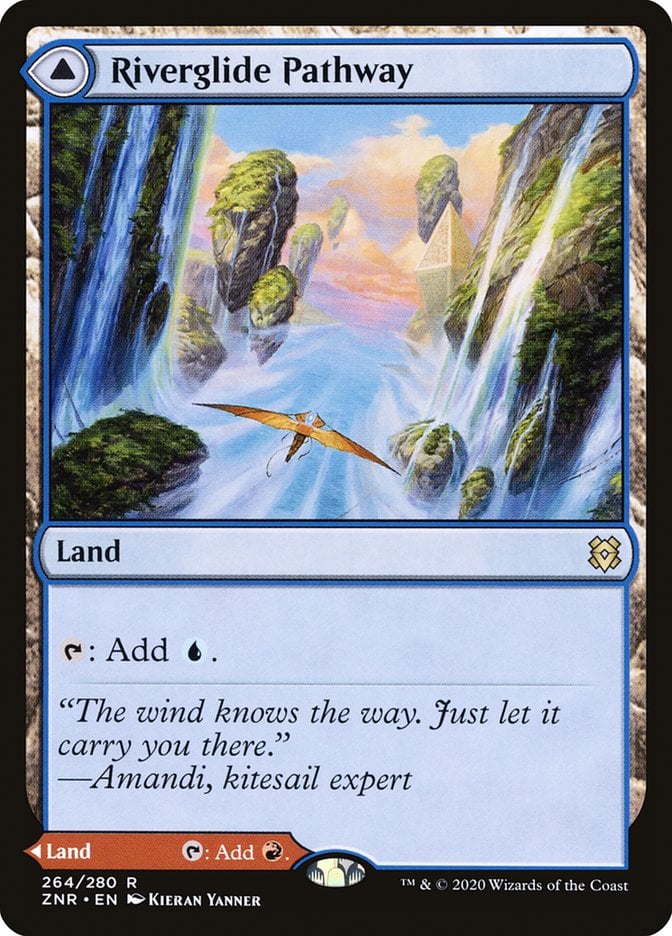




Add Comment